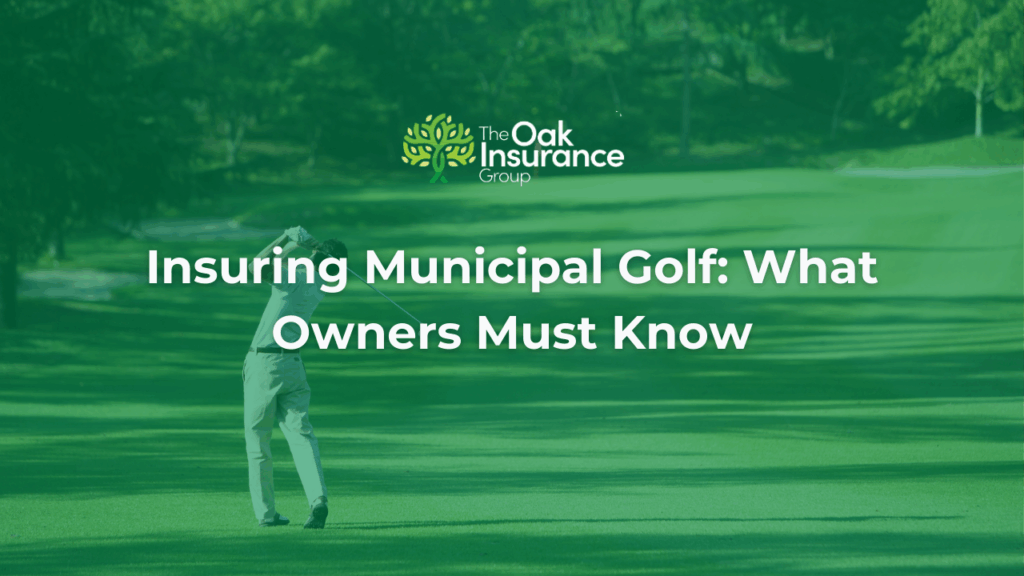
Are you confident your municipal golf course is truly protected against today’s top liability threats?
Have you accounted for legal precedents, public-private partnerships, and emerging risks that could bankrupt an underinsured course?
In this guide, you’ll learn exactly what separates municipal golf course insurance from standard coverage—and how to protect your facility accordingly.
We’ll explore the legal foundations of municipal golf liability, the Charlie Yates public-private model, essential coverage types, broker red flags, and how to adapt to a rapidly changing risk landscape.
The Legal Foundation That Changed Golf Course Insurance Forever
The 1955 Holmes v. Atlanta Supreme Court case didn’t just integrate public golf—it redefined municipal liability exposure.
When Dr. Hamilton Holmes sued the city of Atlanta for access to the Bobby Jones Golf Course, the resulting decision forced municipal courses into a new legal category. Today, any publicly owned facility must consider the ongoing implications of this ruling.
Why This Matters to Owners
Even though it’s not legally required, municipal courses should strongly consider civil rights liability coverage under Section 1983 of the Civil Rights Act. This coverage:
- Protects against discrimination claims
- Typically increases premiums by 15–20%
- May also apply to private courses hosting public events
The Charlie Yates Model: Navigating Public-Private Insurance Complexity
Charlie Yates Golf Course in Atlanta represents a growing trend: privately owned, publicly accessible facilities managed by third parties.
This layered structure requires hybrid insurance that blends municipal and private risk strategies.
What Makes Charlie Yates Unique
- Owned by East Lake Golf Club (private)
- Operated as a public facility
- Managed by Bobby Jones Links (since 2021)
Key Insurance Implications
- Dual liability exposure: Coverage for both public use and private operations
- Professional liability for managers: Required for Bobby Jones Links
- Charity involvement: East Lake Foundation adds a nonprofit coverage layer
This structure increases costs—but also shields against complex liability scenarios.
Required Coverage Framework for Municipal Golf Courses
Whether you run a 9-hole course or a 36-hole complex, these policies are essential:
Core Coverage (All Courses)
- General Liability: $1–5M minimum; must include errant golf ball coverage
Cost: $400–$1,000 per $1M of coverage - Commercial Property: Based on replacement cost; include “tees-to-greens” coverage
Cost: 5–10% of total property value annually - Business Interruption: Actual loss sustained; critical for weather-impacted courses
Municipal-Specific Additions
- Civil Rights Liability: Covers Section 1983 violations
- Environmental Liability: Covers chemical use; separate policy required
Cost: $1,000–$3,000 annually - Directors & Officers (D&O): Protects municipal board members
Cost: $2,000–$5,000 annually
The 2024 Game-Changer: Flood Coverage for the Playing Surface
Until now, flood insurance only protected buildings—not the course itself.
That changed in August 2024, thanks to a revolutionary parametric flood program launched by Amwins and Floodbase.
How It Works
- AI-based flood monitoring triggers automatic payouts—no claims process required
- Covers tees, greens, and fairways for the first time ever
- Protects against business interruption from unplayable conditions
Cost: $2,000–$8,000 annually, depending on location and flood risk
The Insurance Buying Process: 10 Questions You Must Ask
Your broker is your first—and potentially most dangerous—line of defense.
Broker Vetting Questions
- How many golf courses do you insure? (Look for 20+ clients)
- Did you get multiple quotes?
- What’s your commission structure?
- Is your brokerage owned by an insurance company?
Policy-Specific Questions
- What are the differences between each quote?
- Was this policy built specifically for golf operations?
- How are claims handled?
- When were property values last updated?
Operational Questions
- What’s covered for equipment theft or damage?
- Does this include tees-to-greens surface coverage?
Premium Realities: What Golf Courses Actually Pay
Here’s what comprehensive coverage looks like for an 18-hole municipal course:
Baseline Costs
- General liability ($5M): $1,500–$3,000
- Property insurance: $3,000–$8,000
- Business interruption: Varies widely
Total Baseline: $6,500–$16,000 annually
Add-Ons
- Golf cart fleet (50 carts): $2,500–$7,500
- Liquor liability: $200–$500
- Tournament surcharge: +15–25%
- Environmental coverage: $1,000–$3,000
- New flood coverage: $2,000–$8,000
Total Range with Add-ons: $15,000–$35,000+ annually
How to Choose the Right Broker
Red Flags
- No site inspection
- Generic commercial policy
- No municipal liability experience
Green Flags
- Designations like CPCU or CIC
- 5+ years of golf insurance experience
- Access to specialized golf insurers
- Proven claims advocacy
What Management Companies Like Bobby Jones Links Teach Us
Bobby Jones Links manages 40+ courses across 12 states, giving them:
- Volume discounts
- Municipal risk specialization
- In-house claims teams
Solo operators must match this expertise—or risk underinsurance.
What’s Coming Next: Prepare for These Emerging Risks
- Climate Change: Floods, hurricanes, and wildfires increase premiums 30–50%
- ADA Lawsuits: Facilities and websites must meet accessibility standards
- Cyber Liability: Online booking systems now face breach exposure
Cost: $800–$2,500 annually
Your Immediate Action Plan
Within 30 Days
- Review current policy for errant ball exclusions
- Evaluate flood exposure
- Audit ADA compliance (facility + website)
Within 90 Days
- Schedule a broker qualification meeting
- Get three quotes with side-by-side comparisons
- Update property valuations
Long-Term Planning
- Implement a risk management program for premium reductions
- Re-evaluate ownership structure
- Plan for climate-resilient design and coverage
Secure Your Course, Protect Your Community
At the end of the day, municipal golf insurance isn’t just a line item—it’s a legal, operational, and financial strategy.
Whether you’re managing a historic public course like Bobby Jones or pursuing a hybrid model like Charlie Yates, your ability to adapt to today’s unique risks will define your success.
Now that you’ve learned what separates municipal coverage from standard policies, your next step is to meet with a specialized golf insurance broker and ensure your facility is fully protected—for your golfers, your staff, and your community.

